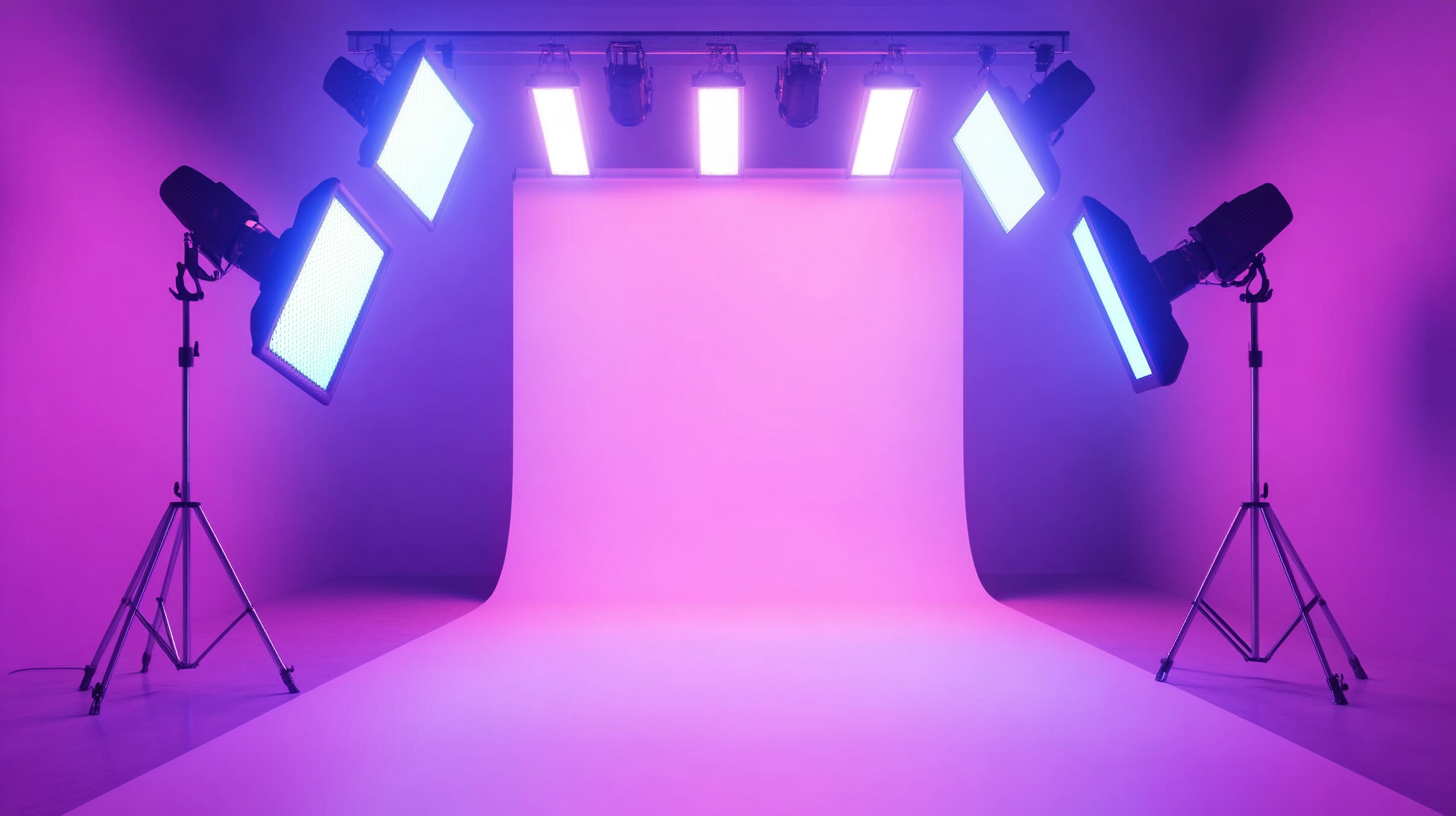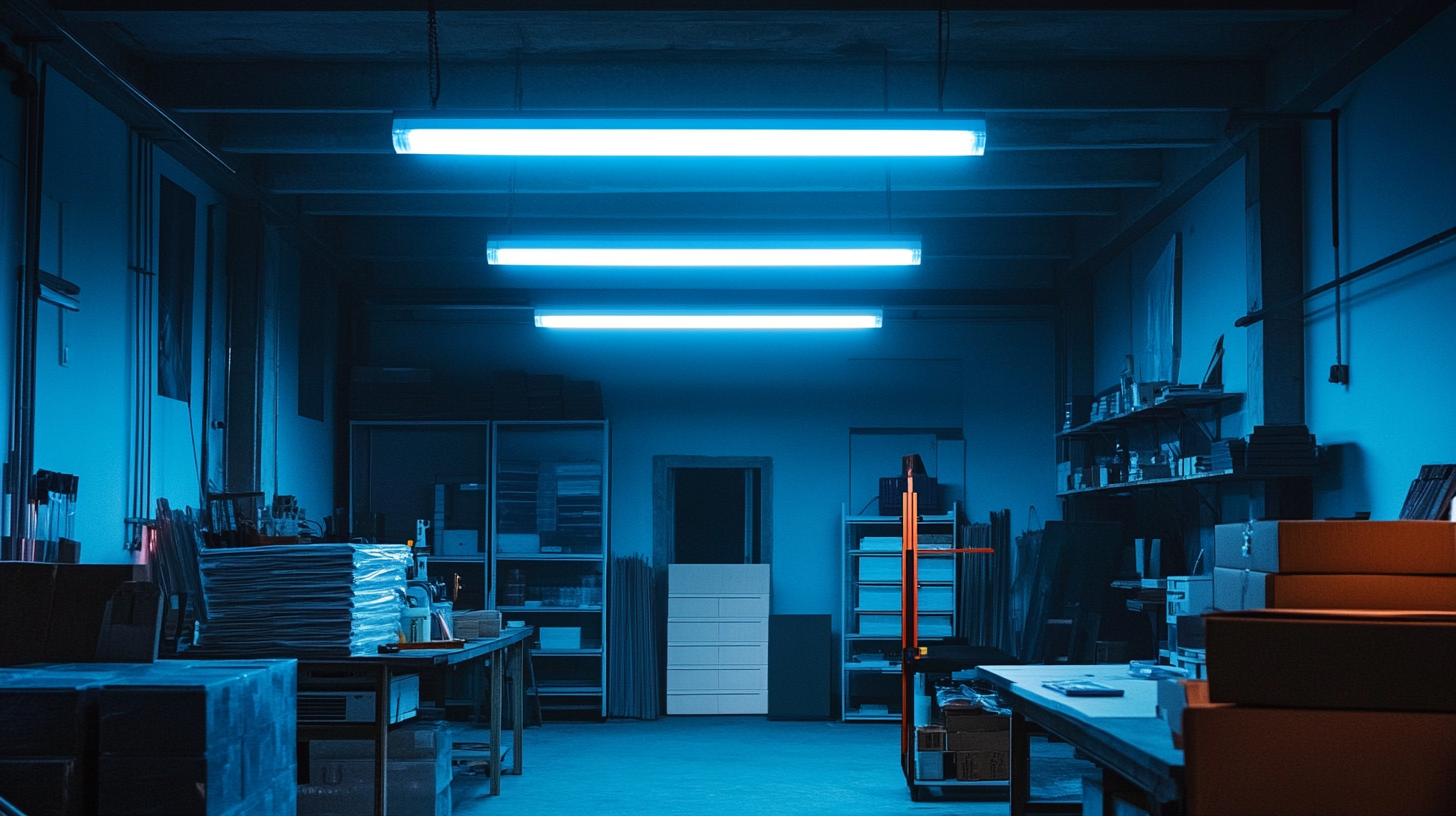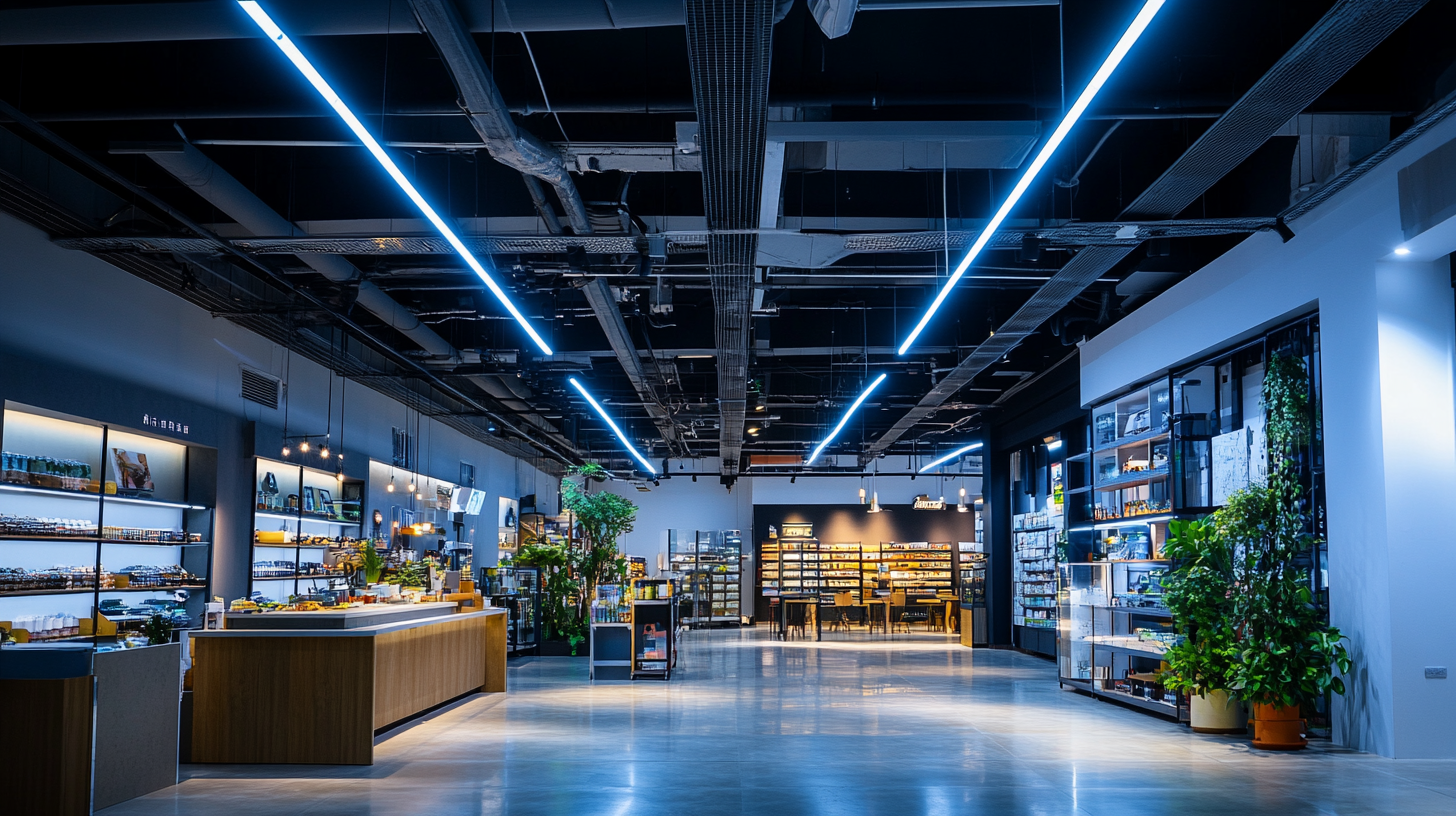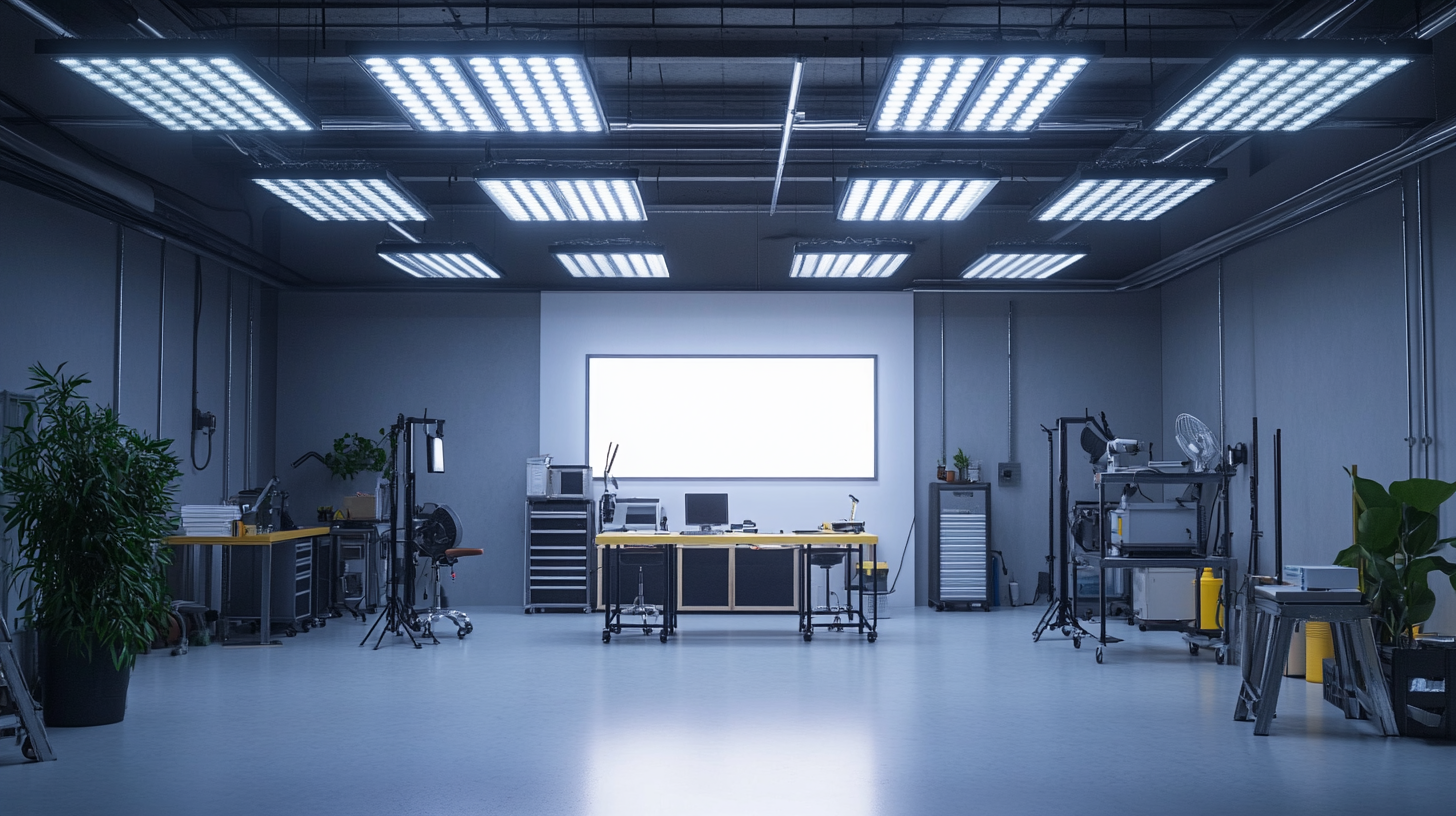Ultimate Guide to Choosing the Best LED Shop Lights for Your Space
In recent years, the popularity of LED shop lights has surged, driven by their energy efficiency and superior illumination compared to traditional lighting options. According to the U.S. Department of Energy, lighting accounts for about 15% of an average home’s electricity use, highlighting the importance of making smart choices when selecting lighting solutions. By upgrading to the best LED shop lights, users can significantly reduce energy consumption and lower utility bills, often by up to 75% compared to incandescent bulbs. This trend is particularly pronounced in commercial spaces where optimal lighting is crucial for productivity and safety.
As industries evolve, so do the choices available for lighting solutions, making it essential to navigate the myriad options effectively. An industry report by the Illuminating Engineering Society notes that quality lighting can enhance a workspace's functionality and aesthetics, impacting employee morale and performance. When searching for the best LED shop lights, factors such as brightness, color temperature, and energy savings must be carefully considered. This ultimate guide will equip you with the knowledge to select the best LED shop lights tailored to your specific needs, ensuring a well-lit environment that promotes efficiency and well-being.

Key Factors to Consider When Selecting LED Shop Lights
When it comes to selecting the best LED shop lights for your workspace, several key factors are essential to ensure that you make the right choice. First, consider the luminosity of the lights, which is typically measured in lumens. According to industry reports, a well-lit shop should have approximately 50-75 lumens per square foot. This means assessing the size of your space to determine how many fixtures you will need to achieve optimal brightness. Another critical factor is the color temperature of the LED lights. This aspect affects the ambiance and functionality of your space. For instance, a color temperature between 4000K and 5000K emits a bright, white light conducive to detailed work, making it ideal for garages or workshops. Conversely, if the goal is to create a warm environment, lights in the 2700K to 3000K range may be preferable. Furthermore, efficiency and lifespan are crucial when selecting LED shop lights. The market has seen a significant shift towards energy-efficient models, with advanced LEDs boasting a life expectancy of up to 50,000 hours compared to traditional bulbs. This longevity not only translates to reduced replacement costs but also lower energy bills, an essential consideration for budget-conscious consumers. Recent analyses indicate that the demand for high-efficiency LED lighting continues to rise, projected to reach millions in market value by 2025, underscoring the growing preference for sustainable lighting solutions in various sectors.

Understanding Different Types of LED Shop Lights and Their Applications
When choosing LED shop lights for your workspace, understanding the different types and their specific applications is crucial. An effective lighting system not only enhances visibility but also ensures safety and improves productivity. Recent studies indicate that proper lighting can reduce workplace accidents by over 30%, underlining the importance of selecting suitable LED fixtures tailored to your tasks.
There are various forms of LED shop lights, including linear fixtures, high bay lights, and puck lights. Each type serves its own purpose—linear fixtures are ideal for long workspaces, high bay lights are perfect for ceilings over 15 feet, and puck lights offer versatile solutions for smaller areas. According to industry reports, energy-efficient LED lights can save businesses up to 80% on electricity costs compared to traditional lighting methods. This long-term saving can be vital for businesses looking to optimize operational costs while enhancing their work environment.
Incorporating advanced LED technology can also aid in applications beyond just illumination. For instance, innovative designs integrating solar-powered photovoltaic systems are emerging as sustainable solutions for commercial spaces, allowing for further energy savings and environmental benefits. The integration of smart technologies with LED shop lights is another trend, enhancing the capability to control lighting conditions remotely, which can further improve energy efficiency and adaptability in various settings.

How to Calculate the Right Brightness for Your Workspace
When it comes to optimizing your workspace, calculating the right brightness for your LED shop lights is crucial. Light intensity, measured in lumens, significantly affects productivity and well-being. According to the Illuminating Engineering Society, work areas should ideally have between 300 to 500 lumens per square meter, depending on the tasks being performed. For detailed tasks like crafting or repairing, aiming for the upper end of the scale ensures that every corner of your workspace is illuminated properly.
In light of recent advancements in display technology, the importance of choosing appropriate lighting becomes even more apparent. As new devices flood the market, including high-performance screens that redefine your interaction with visuals, lighting plays a key role in complementing these innovations. A well-lit workspace not only enhances the visibility of the high-resolution displays but also reduces strain on the eyes, promoting a more comfortable working environment.
Another factor to consider when selecting LED shop lights is the color temperature, measured in Kelvin. A color temperature between 4000K and 5000K is often recommended for workshops, as this range offers a neutral white light that mimics daylight, fostering alertness and focus. As manufacturers continue to innovate with their products, ensuring your workspace lighting is tailored to your needs can help you leverage these advancements effectively, creating a synergy between your tools and environment.

Tips for Installing and Positioning LED Shop Lights Effectively
When installing LED shop lights, the positioning plays a crucial role in optimizing their effectiveness. According to recent industry reports, well-placed LED fixtures can enhance visibility by up to 50%, significantly impacting productivity and safety in workspaces. Proper installation techniques involve assessing the specific needs of your area, such as the height of the ceiling, the size of the workspace, and the tasks performed. For instance, using a layout that maximizes light distribution, such as a grid pattern, can effectively illuminate extensive areas, reducing shadows and improving precision during detailed tasks.
When determining the best height for your LED shop lights, it's recommended to install fixtures approximately 8 to 10 feet above the work surface. This height ensures an even spread of light and minimizes glare, which can be distracting and harmful to the eyes. Additionally, incorporating adjustable fixtures allows for flexibility, enabling users to direct light where it’s most needed based on specific activities or changes in workflow.
In recent market analyses, energy-efficient LED shop lights have been identified as a key factor in reducing operational costs. Compared to traditional lighting, LEDs can consume up to 75% less energy while providing superior brightness. This characteristic is paramount for businesses looking to maintain high productivity levels without incurring excessive electricity costs, thus solidifying the importance of not only choosing the right lights but also positioning them effectively for optimal performance.
Cost-Benefit Analysis: LED Shop Lights vs. Traditional Lighting Options
When considering lighting options for workshops or garages, the choice between LED shop lights and traditional lighting methods like incandescent or fluorescent bulbs is crucial. A cost-benefit analysis reveals that while the initial investment in LED technology may be higher, the long-term savings are significantly more advantageous. According to the U.S. Department of Energy, LED lights can save up to 75% more energy than traditional incandescent bulbs. Over a typical lifespan of 25,000 hours, this translates to substantial savings on energy bills—about $200 or more per bulb.
Additionally, LEDs showcase a remarkable longevity compared to conventional lighting. Incandescent bulbs typically last around 1,000 hours, and fluorescents last about 7,000 hours, while LED shop lights can last anywhere from 15,000 to 50,000 hours. This durability not only diminishes replacement costs but also reduces maintenance efforts, further enhancing their appeal for busy workshops.
Furthermore, the environmental impact of choosing LEDs is noteworthy. The Energy Information Administration indicates that the widespread adoption of LED lighting could result in a reduction of energy consumption equivalent to that of a small power plant over time. The decrease in energy demand also plays a key role in lowering greenhouse gas emissions, making LEDs a more sustainable choice. Hence, beyond just the financial aspect, the ecological benefits add an extra layer of justification for choosing LED shop lights over traditional alternatives.

